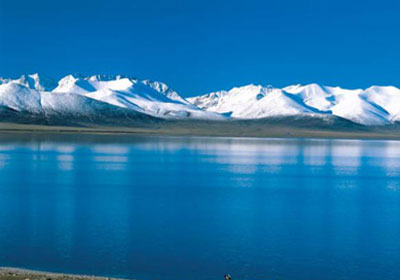 By Lisa Carducci
By Lisa Carducci
The magical and mysterious Tibet... I had dreamt of it for so long, before I finally got my chance to go in 1994, for the first time. Even with the risk of altitude sickness, I wanted to experience it. On the morning of August 4, when we landed in Lhasa Airport, the air was fresh, at 3,600m altitude. At first, we felt as though we were wearing marshmallow shoes and bouncing like astronauts on the moon. But soon after, we fell no more disturbances, except a kind of cervix pressure without consequence. The important thing was to rest the first day and move slowly.
We covered about 100 km by jeep from Gonggar Airport to the city, often stopping to take photos and admire nature. The surroundings seemed desert-like, but as soon as we set one foot down, toothless old men and charming children, who could only pronounce the word "bonbon" (candy) in French, surrounded us. We had not thought to bring any, my two CCTV colleagues and I, but we had apples and cookies for them.
Ah! I could finally see with my own eyes the famed deep azure and small clouds of a brilliant white. In Lhasa, in summer, the sun shines until 4 p.m., then, with extraordinary punctuality, the sky becomes overcast in a second, and a thunderstorm erupts. Two hours later, everything returns to serenity.
Tibetans have always astonished me by wearing, in any season, a coat of mutton skin held at the waist by a large, woollen belt. They wear only one sleeve and put the other one in the belt for comfort while working. They don't seem to sweat in the summer or freeze in the winter. Monks too, in their wine-red tunics, always have one bare arm. Women wear long skirts, and, after marriage, a vividly coloured apron made of three sections with horizontal stripes. Later, I travelled to other Tibetan-inhabited areas such as Sichuan, Gansu, Yunnan and Qinghai, and discovered that the apron is present everywhere but they wear it in different ways, signifying different things.
On most days, women wear several kilos of jewellery: silver, copper, brass, or gold necklaces, decorated with coral, agate, turquoise, and other magnificent stones that are indigenous to Tibet. Their earlobes are stretched by the weight of their earrings, some with holes through which a drinking straw could pass.
The Tibetan population is composed of several sub-groups: Kangba, Anduo, Monba, Lhoba, Sherpa, etc. The Kangba people, originally from Sichuan, are the men who impressed me most, with their high stature and fierce bearing. Their long hair mingles with red or black woollen thread and pompons, which circle their heads.
Women are pretty and rotund but rarely fat, and men, generally well proportioned. Their skin is burnished copper by the sun and the summit winds. They look at you directly, and their smile penetrates you. Extroverts by nature, Tibetans are boisterous; they like to laugh, sing, and play late into the night.